
Hugo Grotius, also known as Huig de Groot and Hugo de Groot, was a Dutch humanist, diplomat, lawyer, theologian, jurist, statesman, poet and playwright. A teenage prodigy, he was born in Delft and studied at Leiden University. He was imprisoned in Loevestein Castle for his involvement in the controversies over religious policy of the Dutch Republic, but escaped hidden in a chest of books that was transported to Gorinchem. Grotius wrote most of his major works in exile in France.
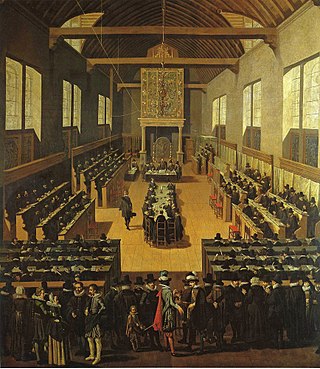
The Synod of Dort was an international Synod held in Dordrecht in 1618–1619, by the Dutch Reformed Church, to settle a divisive controversy caused by the rise of Arminianism. The first meeting was on 13 November 1618 and the final meeting, the 180th, was on 29 May 1619. Voting representatives from eight foreign Reformed churches were also invited. Dort was a contemporary Dutch term for the town of Dordrecht.

Maurice of Orange was stadtholder of all the provinces of the Dutch Republic except for Friesland from 1585 at the earliest until his death in 1625. Before he became Prince of Orange upon the death of his eldest half-brother Philip William in 1618, he was known as Maurice of Nassau.
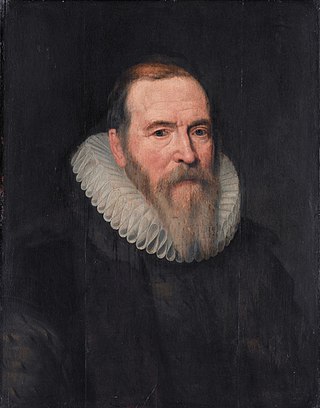
Johan van Oldenbarnevelt, Heer van Berkel en Rodenrijs (1600), Gunterstein (1611) and Bakkum (1613) was a Dutch statesman and revolutionary who played an important role in the Dutch struggle for independence from the Habsburg Castilian Empire.
The Remonstrants is a Protestant movement that split from the Dutch Reformed Church in the early 17th century. The early Remonstrants supported Jacobus Arminius, and after his death, continued to maintain his original views called Arminianism against the proponents of Calvinism. Condemned by the synod of Dort (1618–1619), the Remonstrants remained in a small minority in the Netherlands. In the middle of the 19th century, the Remonstrant Brotherhood was influenced by the liberal Dutch theological movement.

The Twelve Years' Truce was a ceasefire during the Eighty Years' War between Spain and the Dutch Republic, agreed in Antwerp on 9 April 1609 and ended on 9 April 1621. While European powers like France began treating the Republic as a sovereign nation, the Spanish viewed it as a temporary measure forced on them by financial exhaustion and domestic issues and did not formally recognise Dutch independence until the Treaty of Westphalia in 1648. The Truce allowed Philip III of Spain to focus his resources elsewhere, while Archdukes Albert and Isabella used it to consolidate Habsburg rule and implement the Counter-Reformation in the Southern Netherlands.

The history of the Calvinist–Arminian debate begins in early 17th century in the Netherlands with a Christian theological dispute between the followers of John Calvin and Jacobus Arminius, and continues today among some Protestants, particularly evangelicals. The debate centers around soteriology, or the study of salvation, and includes disputes about total depravity, predestination, and atonement. While the debate was given its Calvinist–Arminian form in the 17th century, issues central to the debate have been discussed in Christianity in some form since Augustine of Hippo's disputes with the Pelagians in the 5th century.

In the history of the Dutch Republic, Orangism or prinsgezindheid was a political force opposing the Staatsgezinde (pro-Republic) party. Orangists supported the Princes of Orange as Stadtholders and military commanders of the Republic, as a check on the power of the regenten. The Orangist party drew its adherents largely from traditionalists – mostly farmers, soldiers, noblemen and orthodox Protestant preachers, though its support fluctuated heavily over the course of the Republic's history and there were never clear-cut socioeconomic divisions.

Gilles van Ledenberg was a Dutch statesman. He was secretary of the States of Utrecht from 1588 until his arrest for treason in 1618, together with Johan van Oldenbarnevelt. He committed suicide to prevent forfeiture of his assets, but he was sentenced to death posthumously and posthumously executed.
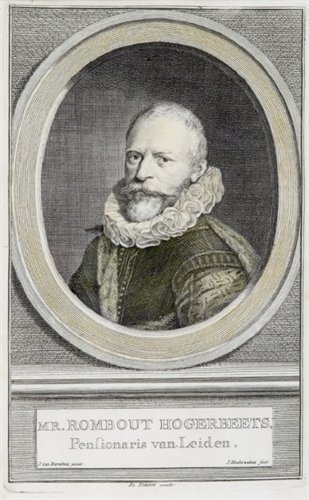
Rombout Hogerbeets was a Dutch jurist and statesman. He was tried for treason, together with Johan van Oldenbarnevelt, Hugo Grotius, and Gilles van Ledenberg during the political crisis of 1617–18 in the Dutch Republic, and sentenced to life-imprisonment. He shared Loevestein prison with Grotius.

Johannes Wtenbogaert was a Dutch Protestant minister, a leader of the Remonstrants.

The Dutch Republic existed from 1579 to 1795 and was a confederation of seven provinces, which had their own governments and were very independent, and a number of so-called Generality Lands. These latter were governed directly by the States-General, the federal government. The States-General were seated in The Hague and consisted of representatives of each of the seven provinces.

Antonius Walaeus was a Dutch Calvinist minister, theologian, and academic.

Jacobus Taurinus was a Dutch preacher and theologian, a main supporter of the Remonstrants and polemical writer in their cause.

Carolus Niellius was a Dutch Remonstrant minister.

The trial of Oldenbarnevelt, Grotius and Hogerbeets was the trial for treason of Johan van Oldenbarnevelt, Land's Advocate of Holland, Hugo Grotius, pensionary of Dordrecht, Rombout Hogerbeets, pensionary of Leiden, and their co-defendant Gilles van Ledenberg, secretary of the States of Utrecht by an ad hoc court of delegated judges of the States General of the Netherlands that was held between 29 August 1618 and 18 May 1619, and resulted in a death sentence for Oldenbarnevelt, and sentences of life in prison for Grotius and Hogerbeets. The trial was and is controversial for political and legal reasons: political, because it put the crown on the coup d'etat of stadtholder Maurice, Prince of Orange and his partisans in the States General of the Dutch Republic that ended the previous Oldenbarnevelt regime and put the Orangist party in power for the time being; legal, because the trial deprived the defendants of their civil rights under contemporary law, and the judges changed both the "constitution" of the Republic and its laws in an exercise of ex post facto legislation.
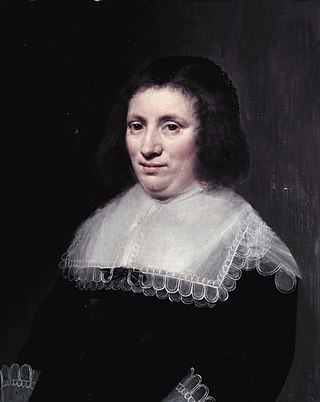
Maria van Reigersberch was the wife of Hugo Grotius, who helped him escape in 1621 from Loevestein Castle during his incarceration there after his 1619 trial.

Adriaan Teding van Berkhout was an eminent Dutch jurist, justice in the Hof van Holland, and politician of the Dutch Republic. He was a friend of Johan van Oldenbarnevelt, who tried to warn the latter of his impending arrest before the Trial of Oldenbarnevelt, Grotius and Hogerbeets.
Benjamin Aubery du Maurier was a French huguenot statesman and ambassador of his country to the States General of the Dutch Republic during the "Truce Quarrels". He tried in vain to save the life of Dutch statesman Johan van Oldenbarnevelt after he was sentenced to death in the Trial of Oldenbarnevelt, Grotius and Hogerbeets.
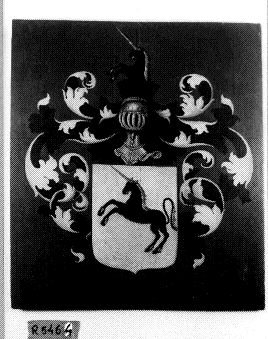
Cornelis van der Mijle was a Dutch politician and diplomat in the service of the Dutch Republic and a regent of Leiden University. He was the son-in-law of Johan van Oldenbarnevelt.

















